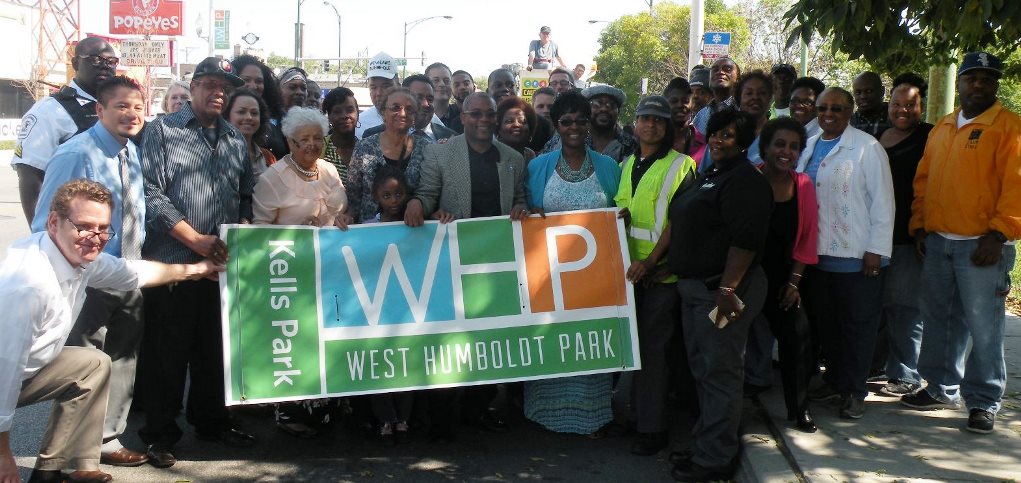Air is becoming an increasingly popular bargaining chip for big city mayors. New York City Mayor Bill de Blasio’s Housing NYC Plan works through the city’s zoning code, allowing developers to build higher in exchange for setting aside a portion of their buildings as permanently rent-regulated housing units.
Chicago Mayor Rahm Emanuel’s downtown development plan allows developers to build taller and denser in Chicago’s downtown areas in exchange for payments into a pool of funding he calls the Neighborhood Opportunity Fund.
In the first week of June 2017, the city of Chicago announced the first $3.2 million awarded out of the Neighborhood Opportunity Fund. The nine awardees included restaurants, a dental office, a marketing company, a bakery and an ice cream shop scattered across low- to moderate-income areas on the South and West Sides of Chicago, overlapping with commercial corridors the city previously targeted for revitalization.
One such corridor is West Humboldt Park, where the West Humboldt Park Family and Community Development Council is working to revitalize the area, starting with an anchor commercial tenant, local celebrity chef Quentin Love and his new Turkey Chop restaurant.
The city says it received 700 applications in the first round of funding, and 32 winning businesses were selected.
In 2016, Mayor Emanuel implemented reforms to the City’s Zoning Code in order to ensure that the growth of downtown drives equitable development throughout the City. It was, in part, an attempt to moderate his well-earned reputation as an aristocratic leader, interested only in benefiting the wealthy residents.
These changes leverage new development in and around the Loop to generate funds that will catalyze investment on Chicago’s West, Southwest and South Sides.
The Neighborhood Opportunity Fund receives funds from that downtown development in order to support commercial corridors in Chicago’s underserved neighborhoods. Business and property owners may apply for grant funding that will pay for the development or rehabilitation of real estate and projects that support new or expanding businesses or cultural assets.
Grant applications are accepted twice a year during the open application window. This year’s rounds are Round 1 from February 27, 2017 to April 21, 2017, and Round 2 from Fall 2017 to Winter 2017. Any qualifying applications that are not funded will automatically be submitted for the following application round.
Eligible applicants must be business or property owners or entities that are engaged in the sale of commercial goods or services. Projects that provide cultural experiences to the general public are also eligible. Examples of Eligible Commercial Projects include grocery stores, theaters, restaurants, music venues, and retail art galleries.
Applicants must be located in an Eligible Commercial Corridor, so that projects can be concentrated and have a bigger collective impact. Although not required, projects may also be located within a Priority Investment Corridor (where complementary businesses are located) and will receive extra weight during the review process.
Larger projects (needing grants over $250,000) with a special neighborhood impact may be considered outside of the Eligible Commercial Corridors, but those projects must be approved by the City Council. We encourage you to contact us with questions about larger projects in advance, but the application is the same.
For all Neighborhood Opportunity Fund projects, costs that can be funded by grants must generally be related to new construction or the rehabilitation of existing buildings. This includes:
- Land acquisition and assembly;
- Building acquisition, demolition and environmental remediation;
- Security measures;
- Roofing, façade repair and mechanical system repairs;
- Architectural and engineering fees;
- Financing fees (related to securing a loan or other capital);
- Minor site improvements, such as fencing or planters, when a part of an eligible project;
- Other soft costs associated with eligible hard costs.
Projects that undertake the construction of new buildings are eligible to receive up to 30% of the total project cost, while projects that rehabilitate existing buildings may receive up to 50% of the project’s total cost.
The minimum total project costs are $30,000, with a grant minimum of $15,000.
Photo credit: the West Humboldt Park Family & Community Development Council.

